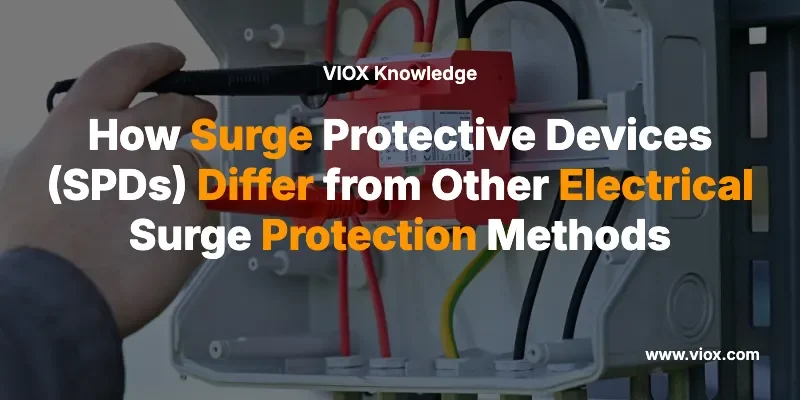Розуміння пристроїв захисту від перенапруги (SPD)
Визначення та основна функція

A пристрій захисту від перенапруги (SPD) – це захисний пристрій для обмеження перехідних напруг шляхом відведення або обмеження імпульсного струму, здатний повторювати ці функції, як зазначено. SPD раніше були відомі як обмежувачі перенапруги перехідного періоду (TVSS) або вторинні обмежувачі перенапруги (SSA), але термінологію було стандартизовано для SPD з прийняттям ANSI/UL 1449 3-го видання у 2009 році.
Фундаментальний принцип роботи SPD полягає в паралельному підключенні до кола живлення навантажень, які вони захищають. SPD, підключений паралельно, має високий імпеданс. Як тільки в системі виникає перехідна перенапруга, імпеданс пристрою зменшується, тому імпульсний струм проходить через SPD, минаючи чутливе обладнання.
Система класифікації SPD
Згідно з Національним електротехнічним кодексом (NEC) та ANSI/UL 1449, пристрої захисту від перенапруг (SPD) класифікуються на три основні типи залежно від місця встановлення та цільового застосування:
Захист входу обслуговування типу 1 SPD
Тип 1: Постійно підключені, призначені для встановлення між вторинною обмоткою сервісного трансформатора та стороною лінії струмового відключення сервісного обладнання (сервісне обладнання). Їхнє основне призначення — захист рівнів ізоляції електричної системи від зовнішніх перенапруг, спричинених блискавкою або перемиканням конденсаторної батареї комунального підприємства.
Основні характеристики:
– Хвиля струму: імпульсний струм 10/350 мкс
– Струм, що піддається обробці: від 50 000 до 200 000 ампер
– Монтаж: Обладнання для службового входу
– Первинний захист від прямих ударів блискавки
Захист SPD типу 2: Захист розподільного щита
Тип 2: Постійно підключені, призначені для встановлення на стороні навантаження пристрою надструмового відключення сервісного обладнання (сервісного обладнання), включаючи розташування на щитах бренду. Їхнє основне призначення — захист чутливої електроніки та навантажень на базі мікропроцесорів від залишкової енергії блискавки, перенапруг, що генеруються двигуном, та інших внутрішньо генерованих перенапруг.
Основні характеристики:
– Хвиля струму: хвиля струму 8/20 мкс
– Струм, що піддається обробці: від 20 000 до 100 000 ампер
– Монтаж: Розподільні щити та центри навантаження
– Первинний захист електричних систем будівель
SPD типу 3: Захист в точці використання
Тип 3: Зарядні пристрої SPD у точці споживання, встановлені з мінімальною довжиною провідника 10 метрів (30 футів) від електричного щита до точки споживання.
Основні характеристики:
– Хвиля струму: комбінація напруги 1,2/50 мкс та струму 8/20 мкс
– Струм, що піддається обробці: від 5000 до 20 000 ампер
– Встановлення: Поблизу захищеного обладнання
– Останній шар локалізованого захисту
Інші методи захисту від електричних перенапруг
Системи безперебійного живлення (ДБЖ)
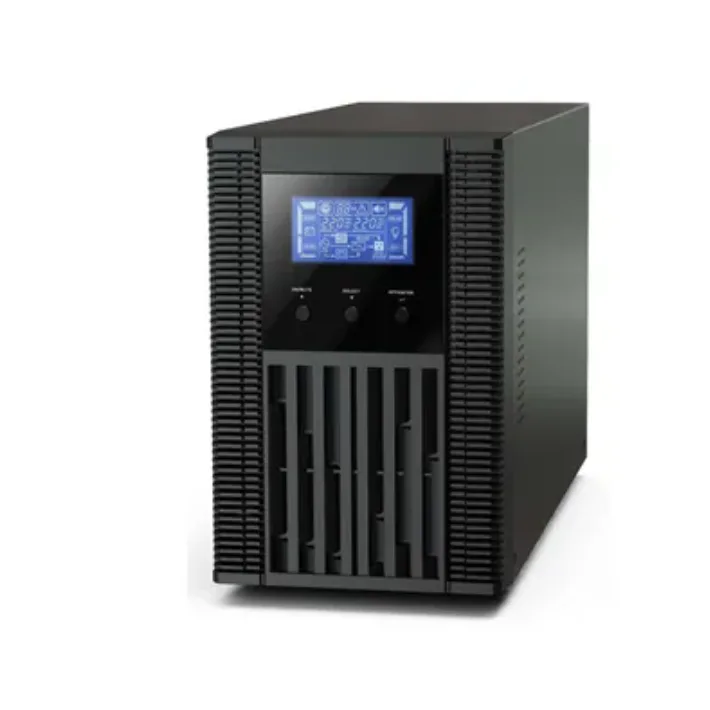
Системи ДБЖ забезпечують комплексний захист живлення, який виходить за рамки простого захисту від перенапруги. Ці пристрої постійно контролюють вхідну напругу та реагують на проблеми з якістю живлення, перемикаючись на живлення від батареї під час перебоїв або серйозних збоїв.
Характеристики захисту ДБЖ:
– Час відгуку2-10 мілісекунд для передачі потужності
– Обсяг захистуІндивідуальний рівень оснащення
– Поточне керуванняЗмінна залежно від потужності агрегату
– Додаткові функціїРезервне живлення від батареї, стабілізація живлення, регулювання напруги
– Діапазон вартості$100-5000+ залежно від потужності
Обмеження ДБЖ щодо захисту від перенапруги:
– Повільніший час відгуку порівняно з SPD
– Обмежена здатність витримувати імпульсні струми
– Потребує обслуговування та заміни акумулятора
– Не призначений для високоенергетичних блискавок
Захисні фільтри від перенапруги подовжувачів проти звичайних подовжувачів
Основні подовжувачі живлення
Подовжувач — це блок електричних розеток, який дозволяє живити кілька електричних пристроїв від однієї електричної розетки. Звичайні подовжувачі не забезпечують захисту від перенапруги, незважаючи на візуальну схожість із мережевими фільтрами.
Характеристики:
– Функція: Тільки розподіл електроенергії
– Захист: автоматичний вимикач лише для захисту від перевантажень
– Час відгуку: Немає захисту від перенапруги
– Вартість: $10-30
– Застосування: Некритичні пристрої, де захист від перенапруги не потрібен
Споживчі мережеві фільтри для захисту від перенапруги
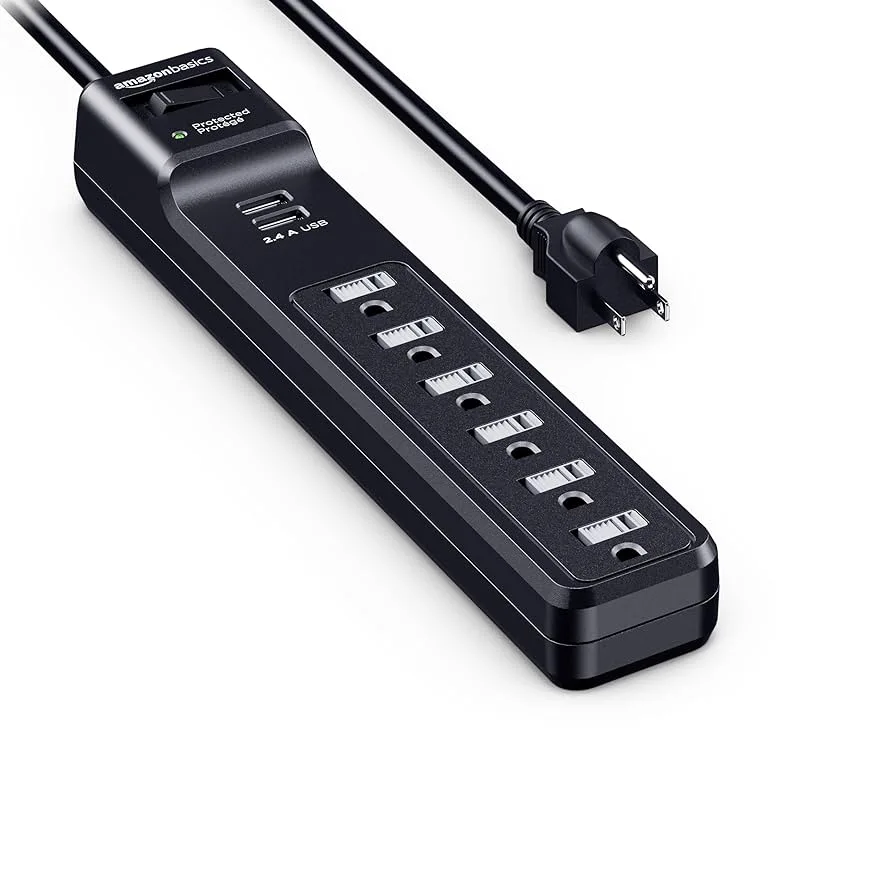
Основна відмінність між мережевим фільтром та подовжувачем полягає в тому, що мережевий фільтр містить варисторний елемент (MOV). MOV відводить шкідливі електричні перенапруги від підключених пристроїв.
Характеристики:
– Поточний струм: зазвичай 1000-4000 джоулів
– Час відгуку: 25 наносекунд (на основі MOV)
– Сфера захисту: Тільки пристрої, підключені безпосередньо до смужки
– Напруга затискання: 330-600 вольт
– Термін служби: погіршується з кожним перенапруженням
Металооксидні варистори (MOV)
Металооксидні варистори – це залежні від напруги резистори, які є основою технології більшості споживчих мережевих фільтрів. МОВ містять керамічну матрицю зерен оксиду цинку з межами зерен, що утворюють діодні переходи.
Операція MOV:
– Нормальні умовиВисокий опір з мінімальним струмом протікання
– Умови перенапругиПробій лавини створює шлях з низьким опором
– Час відгуку: 25 наносекунд
– Поточне керування: 1000-20 000 ампер залежно від розміру
Обмеження MOV:
– Прогресивна деградація при повторному впливі перенапруг
– Зрештою, потрібна заміна після обробки кількох перенапруг
– Відсутність індикації статусу захисту в базових реалізаціях
Діоди для придушення перехідної напруги (TVS)
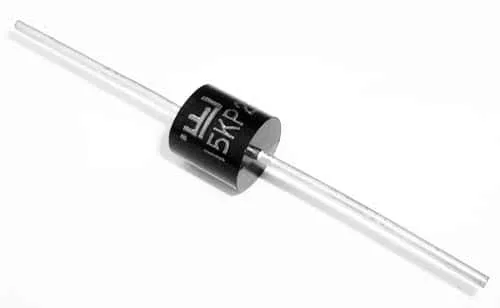
TVS-діоди – це спеціалізовані лавинні діоди, призначені для надшвидкого захисту від перенапруги в чутливій електроніці.
Характеристики TVS-діода:
– Час відгуку1 пікосекунда (найшвидший доступний)
– Поточне керуванняПіковий імпульс 10 000-30 000 ампер
– Точність напругиДуже точні рівні затискання
– Тривалість життяВідсутність ефектів старіння, відмінна довготривала стабільність
– ЗаявкаЗахист на рівні ПХБ в електронному обладнанні
Переваги над MOV:
– Відсутність деградації з часом
– Надзвичайно швидка реакція для захисту від електростатичних розрядів
– Точні характеристики фіксації напруги
– Надійна робота протягом усього терміну служби пристрою
Газорозрядні трубки (ГРТ)
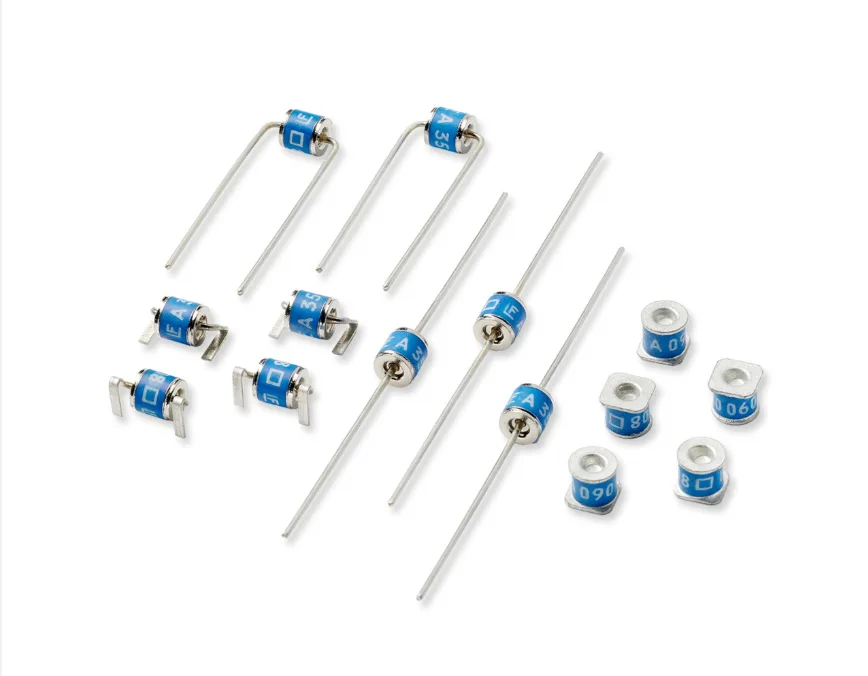
Газорозрядні трубки функціонують як керовані напругою перемикачі, що використовують принципи розряду інертного газу, що зазвичай використовуються в телекомунікаційному обладнанні.
Характеристики ГДТ:
– Час відгуку<1 мікросекунда
– Поточне керування: 10 000–40 000 ампер
– Нормальний станДуже високий імпеданс, мінімальна ємність
– Активований станШлях провідності з низьким імпедансом
– ДодаткиТелекомунікації, захист від високої напруги
Автоматичні вимикачі та засоби захисту
Традиційні автоматичні вимикачі
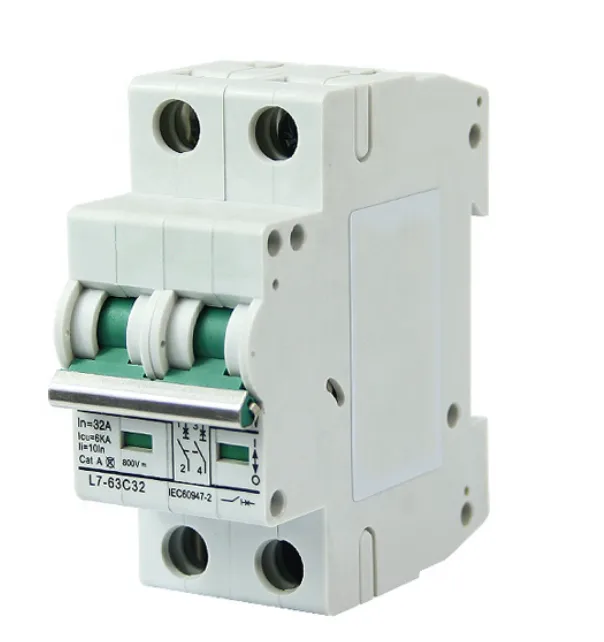
Автоматичні вимикачі забезпечують захист від перевантаження по струму, але не призначені для захисту від перенапруги.
Технічні характеристики автоматичного вимикача:
– ФункціяЗахист від перевантаження по струму та короткого замикання
– Час відгуку: 16-100 мілісекунд
– Захист від перенапругиНемає (занадто повільно для стрибків напруги)
– Поточне керуванняНомінальна сила струму для безперервної роботи
– ЗаявкаЗагальний захист електричних кіл
Захист GFCI та AFCI
– GFCIЗахист від замикання на землю (чутливість 5 мА, час відгуку 25-30 мс)
– АФКІЗахист від дугового замикання для запобігання пожежі
– ФункціяЗахист безпеки, а не захист від перенапруги
– ВимогиВимагається NEC у певних місцях
Системи блискавкозахисту
Блискавкозахисні розрядники
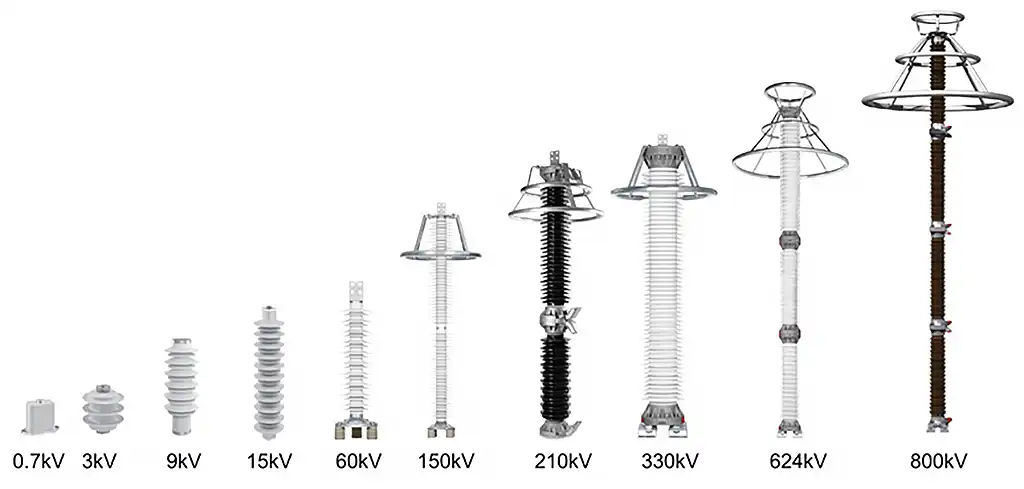
Блискавкозахисні пристрої захищають системи передачі та розподілу від прямих ударів блискавки та перехідних процесів комутації.
Характеристики блискавковідвідника:
– Поточне керування: понад 100 000 ампер
– Рівні напругиНапруга системи передачі (>1000 В)
– Час відгукуМікросекунди
– ЗаявкаСистеми передачі та розподілу комунальних послуг
– Вартість$1000-10000+ для пристроїв класу передачі
Блискавкові відводи (аеровокзали)
– ФункціяВкажіть бажаний шлях удару блискавки
– ЗахистЗахист будівельних конструкцій
– ІнтеграціяПрацює із системою заземлення
– Поточне керуванняПовний струм блискавки (до 200 000 ампер)
Обладнання для контролю якості та кондиціонування електроенергії
Регулятори та стабілізатори напруги
Стабілізатори живлення зосереджені на якості електроенергії в стаціонарному режимі, а не на захисті від перенапруг у тимчасових режимах.
Характеристики регулювання напруги:
– ФункціяПідтримка стабільних рівнів напруги (±1-5%)
– Час відгукуМілісекунди для корекції напруги
– Тип захистуЗахист від падіння напруги та перенапруги
– ЗаявкаРайони з поганою якістю електропостачання
– Вартість$100-1000+ залежно від потужності
Ізоляційні трансформатори
– Функція: Електрична ізоляція та зниження перенапруги
– ЗахистЗгасання перенапруги синфазного режиму (-60 дБ або краще)
– Робота з напругоюІмпульсний вхід 30 кВ, вихід 10 кВ (типово)
– ЗаявкаМедичне обладнання, чутливі прилади
Фільтри електромережі та захист від електромагнітних перешкод
– ФункціяФільтр електромагнітних перешкод та електричного шуму
– ОпераціяБезперервна фільтрація проведених електромагнітних/радіочастотних перешкод
– КомпонентиІндуктори, конденсатори, феритові осердя
– Сфера застосуванняДоповнюйте захист від перенапруги, а не замінюйте його
Захист від перенапруги (SPD) проти інших методів захисту від перенапруги
| Метод | Функція | Відповідь | Місцезнаходження | Течія | Напруга | Тривалість життя | Вартість | Додатки |
|---|---|---|---|---|---|---|---|---|
| SPD Тип 1 | Блискавка | 25 нс | Вхід до служби | 50-200 кА | 700-1500 В | Висока міцність | Високий | Сервісні панелі |
| SPD Тип 2 | Розповсюдження | 25 нс | Розповсюдження | 20-100 кА | 600-1200 В | Висока міцність | Середній | Відгалуження ланцюгів |
| SPD Тип 3 | Точка використання | 25 нс | Біля обладнання | 5-20 кА | 330-600 В | Середня міцність | Низький | Чутливі електронні |
| Системи ДБЖ | Резервне живлення | 2-10 мс | Рівень спорядження | Змінна | ±3-5% | Залежить від батареї | Високий | Критично важливе спорядження |
| Автоматичні вимикачі | Перевантаження по струму | 16-100 мс | Розповсюдження | Змінна | Жоден | Дуже високий | Низький | Загальна схема |
| MOV-файли | Затискач напруги | 25 нс | Рівень пристрою | 1-20 кА | Змінна | Деградує | Дуже низький | Захист компонента |
| TVS діоди | Швидкий перехідний процес | 1 шт. | Рівень друкованої плати | 10-30 кА | Дуже точний | Без старіння | Низький | Електроніка |
| Газовий розряд | Висока напруга | <1 мкс | Рівень спорядження | 10-40 кА | Висока напруга | Дуже високий | Середній | Телеком |
| Затримка блискавки | Захист від блискавки | Мікросекунди | Передача | 100+ кА | рівні кВ | Дуже високий | Високий | Системи живлення |
| Стан живлення | Якість електроенергії | Безперервний | Рівень спорядження | Залежить від навантаження | ±5-10% | Високий | Високий | Чутливе спорядження |
| Ізоляція Транс | Електрична ізоляція | Безперервний | Рівень спорядження | Залежить від навантаження | Гарна ізоляція | Дуже високий | Високий | Медичне обладнання |
Комплексне порівняння: SPD та інші методи захисту
Аналіз часу відгуку
Надшвидкий захист (пікосекунди):
– TVS діоди: 1 пікосекунда – ідеально підходить для електростатичних розрядів та швидких перехідних процесів
Швидкий захист (наносекунди):
– SPD (всі типи): 25 наносекунд – Чудово підходить для перенапруг
– MOV: 25 наносекунд – Добре підходить для помірних стрибків напруги
Помірна швидкість (мікросекунди):
– Газорозрядні трубки: <1 мікросекунда – Підходить для подій високої енергії
Повільна реакція (мілісекунди):
– Системи ДБЖ: 2–10 мілісекунд – Достатньо для передачі живлення
– GFCI/AFCI: 25-30 мілісекунд – Застосування, орієнтовані на безпеку
– Автоматичні вимикачі: 16–100 мілісекунд – Тільки захист від перевантаження по струму
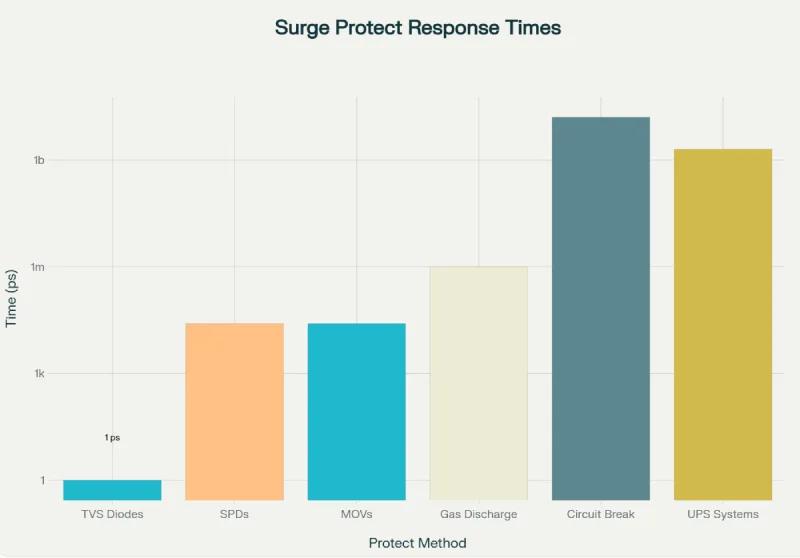
Порівняння поточної вантажопідйомності
Найвища енергія (100+ кА):
– Блискавкозахисні розрядники: захист на рівні передачі
– Захист входу обслуговування SPD типу 1: 50-200 кА
Висока енергія (20-100 кА):
– Захист розподільчої мережі SPD типу 2: 20-100 кА
– Газорозрядні трубки: захист телекомунікацій 10-40 кА
Помірна енергія (5-30 кА):
– SPD Тип 3: захист точки використання 5-20 кА
– TVS-діоди: захист прецизійної електроніки 10-30 кА
Обмежена енергія (1-20 кА):
– Захисні пристрої для споживачів від перенапруги: захист пристроїв 1-4 кА
– ВОЖ: захист компонентів 1-20 кА
Без захисту від перенапруги:
– Базові подовжувачі: лише номінал автоматичного вимикача
– Автоматичні вимикачі: Захист від перевантаження по струму, без захисту від перенапруги
Місце встановлення та системна інтеграція
Ієрархічна установка SPD
Засоби захисту від несправностей (SPID) дотримуються систематичного підходу до встановлення, що забезпечує скоординований захист:
1. SPD типу 1Службовий вхід – перша лінія оборони
2. SPD типу 2Розподільні щити – основний захист будівлі
3. SPD типу 3Захист обладнання в місці використання
Інші методи встановлення
– Системи ДБЖРівень оснащення, вимагає підключення навантаження
– Споживчі мережеві фільтриРівень пристрою, портативний
– Захист ланцюгаРозподільні панелі, орієнтовані на безпеку
– Захист компонентів: рівень ПХБ або всередині обладнання
– Обладнання для контролю якості електроенергіїРівень оснащення, конкретні застосування
Стандарти та відповідність нормативним вимогам
Стандартна структура SPD
– ANSI/UL 1449: Основний північноамериканський стандарт SPD
– Серія IEC 61643Міжнародні стандарти SPD
– Стаття 285 NECВимоги до встановлення пристроїв захисту від несправностей (SPD)
– Обов'язкові вимогиNEC 2020+ вимагає використання SPD для житлових будинків
Інші стандарти методів
– Системи ДБЖUL 1778, серія IEC 62040
– Автоматичні вимикачіUL 489, серія IEC 60947
– Споживчі мережеві фільтриUL 1449 (класифікація типу 3)
– Захист компонентівРізні стандарти, що стосуються окремих компонентів
Економічні та практичні міркування
Аналіз витрат і вигод
Переваги інвестування SPD:
– Захист усієї системи проти витрат на кожен пристрій окремо
– Тривалий термін експлуатації з мінімальним обслуговуванням
– Відповідність нормативним вимогам для окремої установки
– Захист проводки будівлі та вбудованої техніки
Загальна вартість володіння:
– Тип 2 SPD: $200-800 плюс встановлення захищає весь будинок
– Захисні фільтри від перенапруги для кількох споживачів$20-100 кожен, потрібно кілька одиниць
– Системи ДБЖ$100-5000+ плюс вартість заміни акумулятора
– Пошкодження від перенапругиСередній промисловий об'єкт щорічно втрачає 143,9 млрд фунтів стерлінгів.
Вимоги до технічного обслуговування
Низький рівень обслуговування:
– Засоби захисту від несправностей (SPD): моніторинг стану, періодична перевірка
– TVS-діоди: не потребують обслуговування
– Автоматичні вимикачі: Періодичне випробування
Високий рівень обслуговування:
– Системи ДБЖ: Заміна батареї кожні 3-5 років
– MOV: Заміна після деградації
– Стабілізатори живлення: заміна фільтрів, калібрування
Рекомендації щодо конкретного застосування
Житлові програми
Первинний захист: Захист від несправностей типу 2 на головній панелі (вимагається NEC з 2020 року)
Вторинний захист: SPD типу 3 для чутливої електроніки
Резервне живлення: ДБЖ для критично важливого обладнання (комп'ютерів, медичного обладнання)
Комерційне та промислове застосування
Первинний захист: Пристрої захисту від спалахів типу 1 або типу 2 на вході обслуговування
Захист розподілу: Зарядні пристрої типу 2 на підпанелях
Захист обладнання: Пристрої SPD та ДБЖ типу 3 для критично важливих систем
Спеціальний захист: Стабілізатори живлення для чутливих процесів
Телекомунікації та центри обробки даних
Захист від змінного струму: Узгоджене встановлення SPD (типи 1, 2, 3)
Захист від постійного струму: Спеціалізовані пристрої захисту від спалахів (SPD) для телекомунікаційних ліній
Високошвидкісні дані: TVS-діоди для захисту сигнальної лінії
Критичні системи: ДБЖ з резервним акумулятором для безперебійної роботи
Короткий огляд ключових відмінностей
SPD проти споживчих мережевих фільтрів
– Поводження з енергією: Пристрої захисту від струмів SPD витримують струм 20-200 кА порівняно з 1-4 кА для споживчих щитів
– Сфера захисту: Захист усієї системи проти захисту окремих пристроїв
– Інсталяція: Постійне кріплення на панель проти портативного кріплення до розетки
– Стандарти: Професійні електротехнічні стандарти проти стандартів споживчих товарів
– Тривалість життя: Розроблено для тривалого терміну служби, на відміну від заміни після сильних перенапруг
Пристрої захисту від спалахів (SPD) проти систем ДБЖ
– Основна функція: Захист від перенапруги проти резервного живлення
– Час відповіді: 25 наносекунд проти 2-10 мілісекунд
– Поводження з енергією: Високий імпульсний струм проти обмеженого захисту від імпульсних перенапруг
– Обслуговування: Мінімальна заміна батареї порівняно з необхідністю
– Вартість: Одноразове встановлення проти постійних витрат на акумулятор
SPD проти обладнання для контролю якості електроенергії
– Тип захисту: Захист від перехідних перенапруг у порівнянні з якістю електроенергії в стаціонарному режимі
– Швидкість відгуку: Наносекунди проти мілісекунд
– Заявка: Перенапруга проти безперервного регулювання потужності
– Інсталяція: Паралельне підключення проти послідовного монтажу
Висновок
Пристрої захисту від перенапруги являють собою спеціалізований та високоефективний підхід до захисту від перенапруги, який принципово відрізняється від інших методів захисту своїм систематичним застосуванням, відповідністю нормативним вимогам та комплексними захисними можливостями. Хоча інші методи, такі як системи ДБЖ, автоматичні вимикачі, MOV, TVS-діоди та стабілізатори живлення, відіграють важливу роль в електричному захисті, SPD пропонують унікальні переваги завдяки своїм:
– Стандартизована система класифікації (Типи 1, 2, 3) для скоординованого захисту
– Швидкий час реагування (25 наносекунд) для ефективного обмеження перенапруги
– Висока струмопідйомність (20 000–200 000 ампер) для сильних перенапруг
– Комплексна нормативно-правова база з певними вимогами NEC
– Систематична ієрархія встановлення для захисту всієї будівлі
Ключовою відмінністю є те, що SPD забезпечують базовий захист від перенапруги для цілих електричних систем, тоді як інші методи зазвичай захищають окремі пристрої або вирішують різні електричні проблеми. Сучасні електроустановки отримують найбільшу користь від багаторівневого підходу до захисту, який поєднує належним чином узгоджені SPD з відповідними додатковими методами захисту, що базуються на конкретних вимогах застосування.
Розуміння цих відмінностей дозволяє фахівцям-електрикам розробляти комплексні стратегії захисту, які відповідають як цілям продуктивності, так і нормативним вимогам, одночасно оптимізуючи інвестиції в захист у житлових, комерційних та промислових приміщеннях.
Пов'язане
Що таке пристрій захисту від перенапруги (SPD)
Аналітика спільноти: Найкращі поради Reddit щодо SPD (захисту від перенапруги)
Як вибрати правильний SPD для вашої сонячної електростанції

